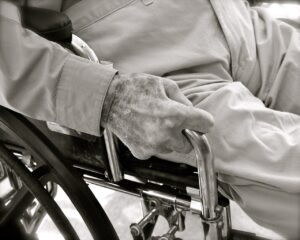Table of Contents
ToggleIntroduction
Providing respectful and compassionate care to the deceased is an important aspect of nursing practice. Here are some considerations for nursing care of the deceased:
-
Communication and Sensitivity:
- Communicate with empathy and sensitivity to the family or significant others.
- Use clear and compassionate language to explain the situation.
- Be responsive to cultural and religious practices related to death and mourning.
-
Maintaining Dignity:
- Ensure that the deceased is treated with dignity and respect.
- Close the eyes and mouth gently to create a peaceful appearance.
- Cover the body appropriately and maintain privacy.
-
Environmental Considerations:
- Maintain a quiet and serene environment in the room.
- Dim the lights to create a calm atmosphere.
- Keep the room clean and well-organized.
-
Post-Mortem Care:
- Perform post-mortem care promptly, including cleaning and preparing the body.
- Attend to any medical equipment and lines still in place.
- Secure belongings and ensure proper documentation.
-
Support for the Family:
- Offer emotional support to the family and provide information about available resources.
- Allow family members time to say their goodbyes.
- Answer questions honestly and be available for support.
-
Cultural and Religious Considerations:
- Respect and adhere to the deceased person’s cultural or religious beliefs and practices.
- Allow family members to perform rituals or ceremonies as needed.
-
Documentation:
- Document the time of death accurately and comprehensively.
- Complete all required paperwork promptly and with attention to detail.
-
Interdisciplinary Collaboration:
- Collaborate with other healthcare professionals, such as chaplains or social workers, to provide holistic support.
- Participate in debriefing sessions with the healthcare team to address any emotional impact.
-
Preparation for Viewing:
- Prepare the deceased for viewing, if requested by the family.
- Arrange the body in a comfortable and natural position.
- Provide any necessary support, such as pillows or positioning aids.
-
Transportation and Handover:
- Coordinate with the appropriate personnel for the transportation of the deceased.
- Provide a thorough handover to ensure continuity of care during the transition.
Nursing care of the deceased involves not only physical tasks but also emotional support for both the family and healthcare team members. It is essential to approach this aspect of care with compassion, professionalism, and cultural competence.
Caring for the dead
Caring for the deceased is a delicate and important aspect of nursing practice. The purpose of this process is to prepare the body for the morgue, prevent discoloration or deformity, and protect the body from post-mortem discharge. Here are guidelines and considerations for this task:
Purpose:
- Prepare for Morgue:
- The primary goal is to ready the body for transfer to the morgue.
- Ensure a dignified and respectful preparation process.
- Prevent Discoloration or Deformity:
- Handle the body with care to prevent any unnecessary discoloration or deformity.
- Use appropriate techniques and products to maintain the body’s appearance.
- Protect from Post-Mortem Discharge:
- Take measures to safeguard the body from any post-mortem discharge.
- Use proper equipment and techniques to minimize the risk of complications.
Equipment:
- Warm water basin
- Lysol solution (2%)
- Soap
- Scissors
- Comb or brush
- Bath towel and washcloth
- Surgical dressings, if needed
- Mortuary pack: shroud, diaper sheet, two death tags, non-absorbent cotton, pins, bandages, forceps
- Bed screen
Points to Remember:
- Respect for the Deceased:
- Treat the deceased with the utmost respect and dignity.
- Minimize unnecessary exposure and maintain professionalism.
- Proper Identification:
- Ensure accurate and proper identification of the body.
- Follow institutional protocols for identification procedures.
- Care for Belongings:
- Safeguard clothing, jewelry, and other valuables or belongings.
- Store and document these items appropriately.
- Maintain Privacy:
- Use bed screens or other appropriate measures to maintain privacy during the preparation process.
- Minimize exposure to anyone not directly involved in the task.
- Documentation:
- Record all necessary information, including the time of preparation, procedures performed, and any relevant observations.
- Complete required paperwork thoroughly and accurately.
- Cultural Sensitivity:
- Be mindful of and respect cultural or religious practices related to the care of the deceased.
- Adjust care practices as needed to align with individual or family preferences.
- Professionalism:
- Conduct all activities related to post-mortem care in a professional and compassionate manner.
- Communicate with sensitivity and empathy when interacting with family members.
Procedure:
Providing nursing care for the deceased involves a series of respectful and dignified steps following the pronouncement of death by a doctor. Here is a guide for the procedure:
- Positioning:
- Once the patient has been pronounced dead by the doctor, place the body in a dorsal position with a small pillow under the head.
- Straightening the Body:
- Ensure the body is straightened, maintaining a natural posture.
- Denture Placement:
- If the patient had dentures, place them in the mouth.
- Appliance Removal:
- Remove all medical appliances, including catheters, drainage tubings, and Venoclysis sets.
- Closing Eyes and Mouth:
- Gently close both the eyes and mouth if left open.
- Eye Care:
- For the eyes, bring the upper lid down to meet the lower lid and apply gentle pressure for a short duration.
- Mouth Care:
- Bring the jaws together by placing a rolled towel under the chin.
- Bed Linen Adjustment:
- Remove any extra bed linen and camisa, leaving one sheet to cover the body.
- Bathing:
- Bathe the body using a Lysol solution for rinsing.
- Appliance Replacement:
- Change surgical dressings as needed. Pack the anus with cotton and, if applicable, address the vagina. Use forceps for any nasal or oral discharges.
- Diaper Placement:
- Place a diaper on the deceased.
- Hand and Wrist Care:
- Position the hands over the chest, pad the wrists with cotton, and tie the two wrists together using a bandage. Attach one identification tag to the wrist.
- Ankle Care:
- Pad the ankles and tie them together.
- Shrouding:
- Dress the body in a shroud, wrapping it well with a sheet. Attach the second identification tag at the center.
- Covering:
- Cover the prepared body with a sheet.
- Notification:
- Notify the head nurse or contact the appropriate personnel (messenger) to transport the body to the morgue.

